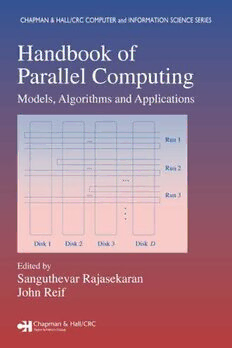
Handbook of parallel computing: models, algorithms and applications PDF
1172 Pages·2007·10.993 MB·English
Most books are stored in the elastic cloud where traffic is expensive. For this reason, we have a limit on daily download.
Preview Handbook of parallel computing: models, algorithms and applications
Description:
The ability of parallel computing to process large data sets and handle time-consuming operations has resulted in unprecedented advances in biological and scientific computing, modeling, and simulations. Exploring these recent developments, the Handbook of Parallel Computing: Models, Algorithms, and Applications provides comprehensive coverage on all aspects of this field. The first section of the book describes parallel models. It covers evolving computational systems, the decomposable bulk synchronous model, parallel random access machine-on-chip architecture, the parallel disks model, mobile agents, fault-tolerant computing, hierarchical performance modeling, the partitioned optical passive star network, and the reconfigurable mesh model. The subsequent section on parallel algorithms examines networks of workstations, grid and packet scheduling, the derandomization technique, isosurface extraction and rendering, suffix trees, and mobile computing algorithmics. The final part of the text highlights an array of problems and offers ways to combat these challenges. This volume provides an up-to-date assessment of the models and algorithms involved in applying parallel computing to a variety of fields, from computational biology to wireless networking.
See more
The list of books you might like
Most books are stored in the elastic cloud where traffic is expensive. For this reason, we have a limit on daily download.
